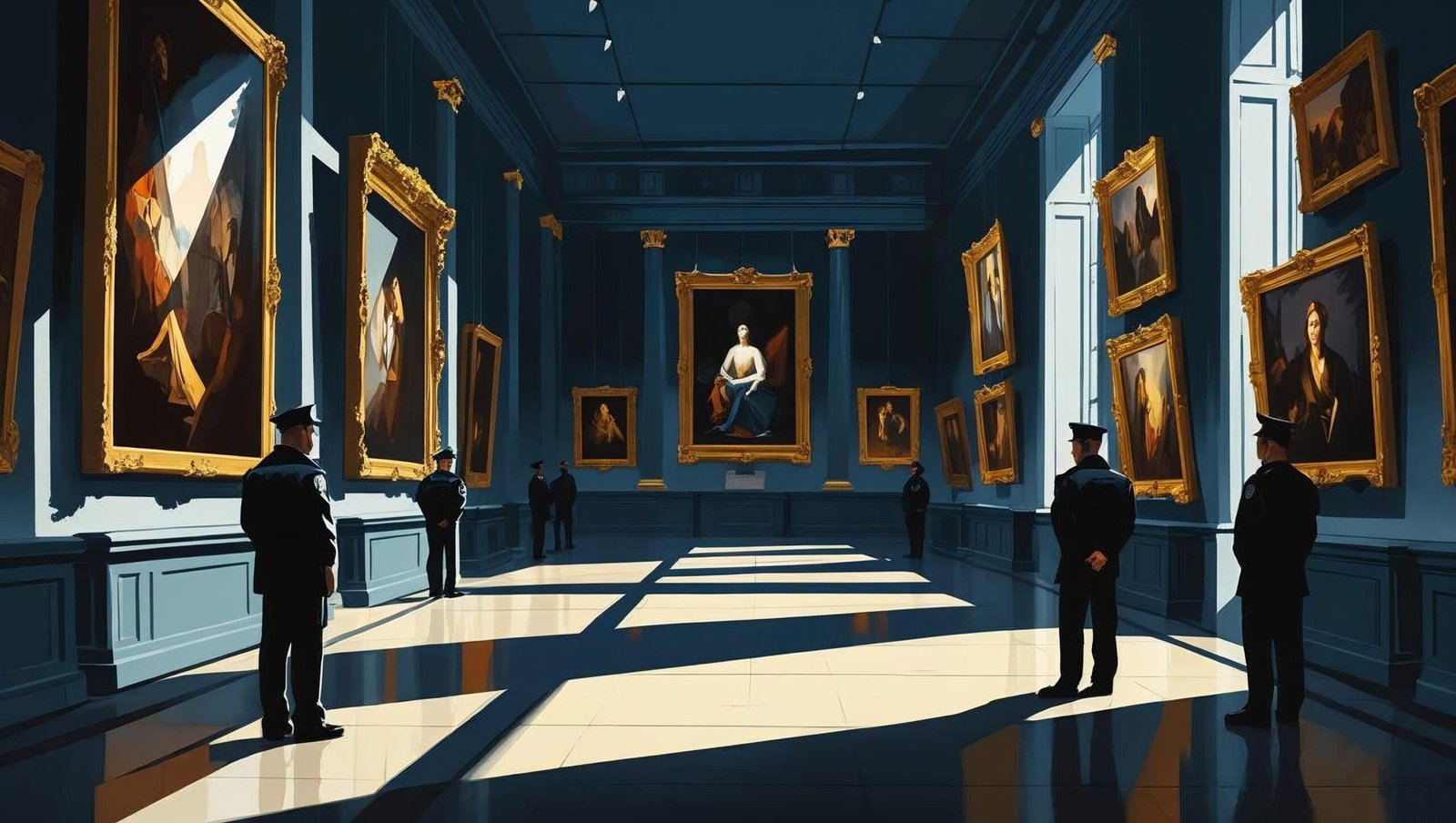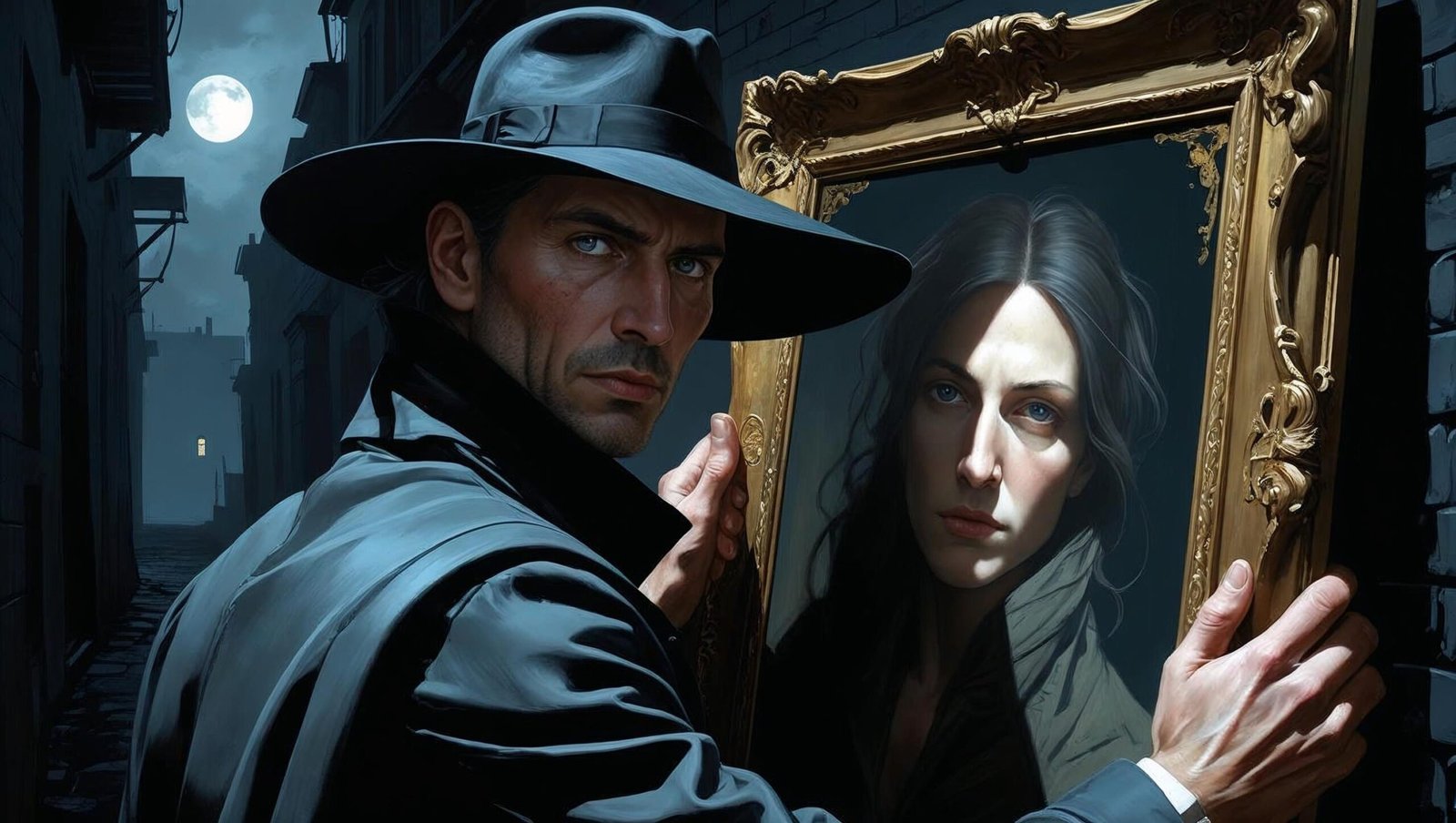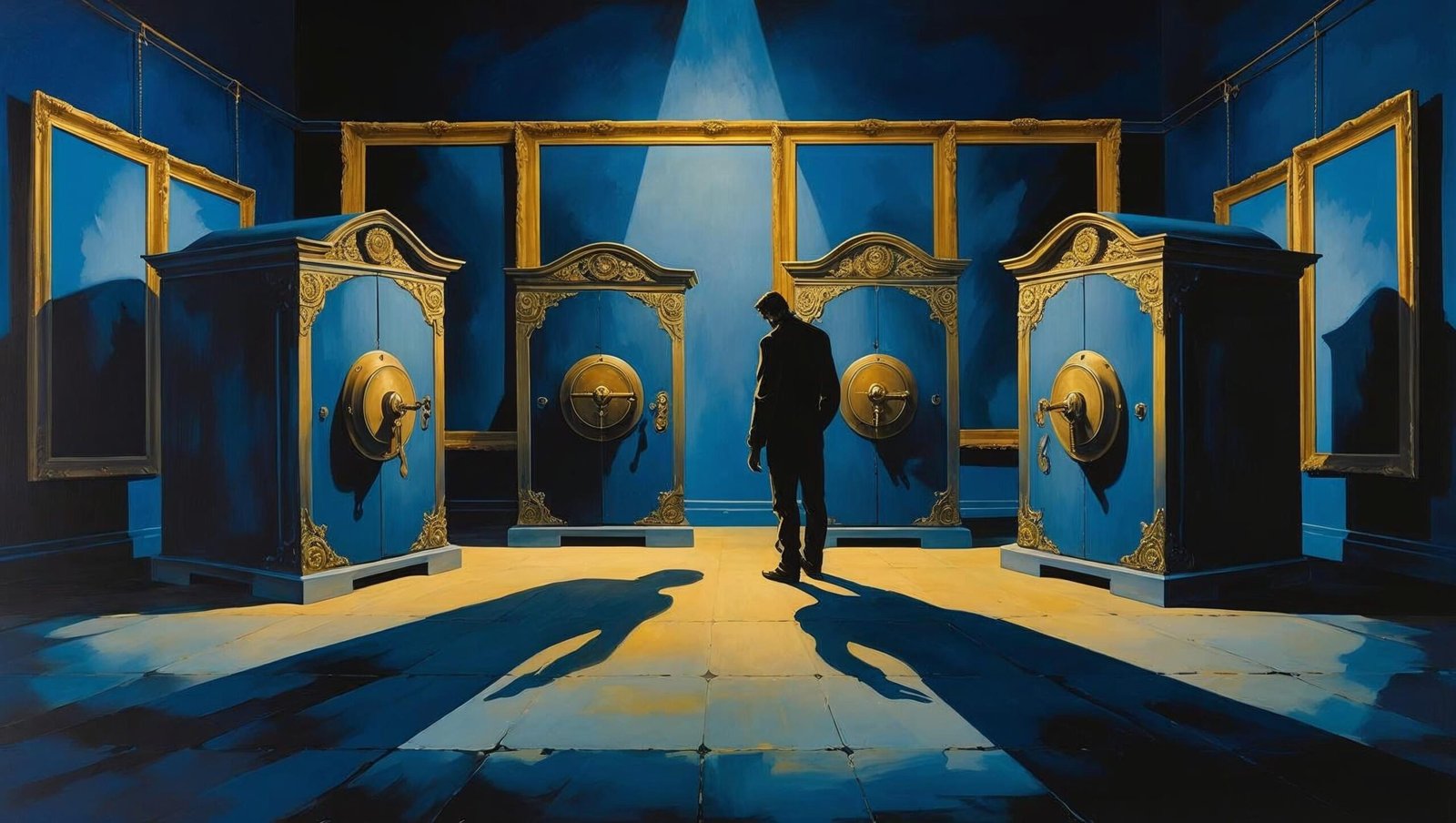The Art Thief Summary – 11 Shocking Lessons from Michael Finkel’s Masterpiece
Introduction
The Art Thief Summary is not merely an account of stolen paintings; it is an exploration of obsession, desire, and the dangerous allure of beauty. Written by acclaimed journalist Michael Finkel, this book is based on the astonishing true story of Stéphane Breitwieser, a man who single-handedly carried out more than 200 art thefts across Europe. Unlike most criminals, Breitwieser was not motivated by money but by an overwhelming passion for art. He wanted to live surrounded by beauty, and for nearly a decade, he succeeded in building a hidden collection unlike any other.
In this blogpost, we will dive deep into The Art Thief Summary, analyze its key themes, highlight shocking insights, and extract lessons that resonate beyond the pages. Whether you are a literature enthusiast, a true-crime follower, or an art lover, this detailed review will uncover the psychological depth and human contradictions that define Finkel’s narrative.

Lesson 1 – The Power of Obsession
The Art Thief Summary demonstrates how obsession can both elevate and destroy. Stéphane Breitwieser’s fixation on art transcended ordinary admiration. He could not resist the temptation of possessing beauty. Unlike collectors who lawfully acquire art, he stole it, often in broad daylight, from museums and galleries with astonishing boldness.
Michael Finkel shows us that unchecked obsession, even when rooted in love for beauty, can lead to downfall. This serves as a cautionary tale for anyone who allows passion to spiral into compulsion.
Lesson 2 – A Criminal Without Greed
One of the most shocking elements of The Art Thief Summary is that Breitwieser never sold a single stolen piece. His thefts were not driven by profit but by an emotional need to live with art. This makes him different from ordinary criminals who exploit stolen works for wealth.
Finkel reveals that Breitwieser’s motives complicate our understanding of morality. Can someone who genuinely loves art but steals it still be admired? The book forces readers to wrestle with this moral paradox.
Lesson 3 – Love and Complicity
The Art Thief Summary also highlights the role of Anne-Catherine Kleinklaus, Breitwieser’s girlfriend, who not only knew of his thefts but often assisted him. Her complicity shows how love can blind individuals to right and wrong. Instead of dissuading him, she became his partner in crime.
This lesson reveals the danger of unhealthy relationships where devotion clouds judgment. Love, when twisted by obsession, can fuel destructive behavior.
Lesson 4 – The Fragility of Security
Michael Finkel uses The Art Thief Summary to expose the fragility of European museum security during the 1990s. Breitwieser exploited weak systems, minimal surveillance, and inattentive guards. His success shows how institutions often underestimate threats.
For readers, this lesson extends beyond art theft. It reminds us that security, whether in personal life or organizational settings, must constantly evolve to confront new challenges.
Lesson 5 – The Psychology of Beauty
The Art Thief Summary goes beyond crime; it probes the psychological effect of beauty. Breitwieser described being overwhelmed by certain artworks, feeling an uncontrollable urge to possess them. His reactions highlight how beauty can inspire awe but also incite irrational behavior.
Finkel’s storytelling urges us to reflect: does beauty belong only in private admiration, or must it be safeguarded for collective appreciation?
Lesson 6 – The Thrill of Risk
Another theme in The Art Thief Summary is the thrill that comes with risk. Breitwieser admitted that part of his addiction was the adrenaline of stealing in plain sight. The danger intensified his desire.
This lesson warns us about the seductive nature of risk. For some, it becomes as addictive as the object they pursue, leading to cycles of reckless behavior.

Lesson 7 – The Hidden Collection
At the peak of his career, Breitwieser had amassed more than 200 stolen works, hidden away in his mother’s house. The Art Thief Summary presents this bizarre treasure trove as both magnificent and tragic.
While his secret gallery was breathtaking, it also symbolized isolation. Instead of sharing beauty with the world, he imprisoned it within walls, mirroring his own confinement within obsession.
Lesson 8 – A Mother’s Role
The Art Thief Summary takes a dramatic turn when Breitwieser’s mother discovers his thefts. Instead of protecting the art, she destroys much of it after his arrest, cutting up paintings and discarding treasures. This act represents both desperation and misplaced loyalty.
It reminds readers how family relationships can complicate justice. Love can lead even parents to destructive actions in misguided attempts to protect their children.
Lesson 9 – The Fall from Grace
Eventually, Breitwieser was caught. The Art Thief Summary details his downfall, showing how years of audacity collapsed due to human error. His arrest proved that no obsession, no matter how carefully hidden, can escape exposure forever.
This lesson reinforces a timeless truth: deception and crime carry within them the seeds of eventual ruin.
Lesson 10 – Art as Identity
Through The Art Thief Summary, Finkel shows how deeply art became intertwined with Breitwieser’s identity. For him, life without art was unbearable. Yet his method of possession destroyed his relationship with beauty, as the act of theft overshadowed genuine appreciation.
It compels readers to reflect on their own identities: do we seek fulfillment in healthy passions, or do we allow desires to consume us destructively?
Lesson 11 – The Genius of Michael Finkel
Finally, The Art Thief Summary is not only about Breitwieser; it is about Michael Finkel’s brilliance as a writer. His narrative weaves suspense, psychology, history, and ethics into a compelling masterpiece. He does not merely recount events but paints vivid portraits of obsession and downfall.
The book becomes more than true crime—it is literature that raises profound questions about art, morality, and human weakness.

Diving Deeper into The Art Thief
While the earlier lessons and themes highlight the broad strokes of Michael Finkel’s work, a chapter-wise understanding allows us to appreciate the narrative depth and artistry with which the story is told.
Chapter 1 – The Beginning of Obsession
The book opens with Finkel’s vivid reconstruction of Breitwieser’s early encounters with art. He is not portrayed as a typical criminal but as a young man overwhelmed by the presence of beauty. His first theft is almost impulsive, triggered by an emotional surge. This moment is crucial because it sets the stage for everything that follows: the shift from admiration to possession.
Chapter 2 – The Psychology of Desire
Finkel slowly unravels Breitwieser’s mind. Instead of explaining him through greed, the author turns the spotlight on desire. The thief is painted as someone who feels incomplete without surrounding himself with masterpieces. It is this chapter where we begin to see that his story is not about wealth but about an insatiable emotional need.
Chapter 3 – Partnership in Crime
Anne-Catherine, his partner, enters as more than a side character. She embodies loyalty, but also complicity. Together, they move across countries, identifying weaknesses in security systems, and striking with uncanny precision. The chapter also reveals how love can become distorted when shared goals are unlawful.
Chapter 4 – The Building of a Secret Museum
As the thefts accumulate, Breitwieser’s mother’s house transforms into a hidden gallery. Finkel describes the surreal beauty of the rooms filled with paintings, sculptures, and priceless artifacts. Yet, beneath the surface lies irony: the man who wanted to preserve beauty for himself was simultaneously destroying its purpose, which is to inspire collective wonder.
Chapter 5 – A Game of Cat and Mouse
Finkel heightens suspense by showing how close Breitwieser came to being caught multiple times. Security guards walked past him, museum officials overlooked suspicious behaviors, and yet he escaped repeatedly. This chapter adds cinematic tension, almost making readers admire the audacity while questioning the ethics.
Chapter 6 – The Mother’s Role
The turning point arrives when his mother, in a desperate attempt to protect her son, destroys irreplaceable art after his arrest. This chapter is heartbreaking, as it underlines how familial bonds can trigger irrational acts. Entire centuries of cultural heritage were lost because of her misguided love.
Chapter 7 – Arrest and Consequences
Eventually, the inevitable collapse occurs. Breitwieser’s arrest marks the end of an extraordinary saga. But instead of presenting closure, Finkel uses this chapter to explore themes of justice, morality, and tragedy. The world lost irreplaceable works, and one man lost the freedom to indulge his obsession.
Chapter 8 – Reflection and Aftermath
The final chapters of The Art Thief are meditative. Finkel asks us to consider what drove Breitwieser: was it madness, or was it an extreme form of passion? This reflective tone gives the narrative weight, ensuring readers leave not only entertained but also disturbed and thoughtful.
The Broader Psychology of The Art Thief
To understand the man at the center of The Art Thief Summary, one must explore psychological frameworks that explain his behavior. Psychologists often refer to such patterns as obsessive-compulsive tendencies, where individuals cannot resist impulses despite knowing their risks. Breitwieser’s actions were not financially rational; they were emotionally compulsive.
Additionally, his behavior connects to the concept of aesthetic addiction. Just as some individuals are addicted to thrill, substances, or experiences, Breitwieser was addicted to the emotional high of beauty. Each theft was less about ownership and more about feeding an insatiable hunger for emotional ecstasy.
This analysis reveals the uniqueness of his case: he was not a hardened criminal but rather a victim of his own unchecked impulses.
Cultural and Historical Context of Art Theft
Art theft is not new. The Art Thief Summary gains depth when viewed against the backdrop of art crime throughout history.
-
Napoleon’s Plunder – During the Napoleonic Wars, armies systematically looted European museums and churches, taking priceless works to Paris.
-
World War II Looting – The Nazis infamously stole thousands of works of art, many of which remain missing today.
-
Modern Heists – From the Isabella Stewart Gardner Museum theft in Boston to daring robberies in Europe, art theft continues to haunt cultural institutions.
What makes Breitwieser unique, however, is his refusal to profit from crime. While most looters and thieves acted for power or money, his story is one of personal obsession. That uniqueness is what drew Michael Finkel to dedicate years of research and narrative craftsmanship to write The Art Thief.
Michael Finkel’s Literary Style
Finkel is not content with presenting facts. He adopts a style that blends journalism with literary storytelling. His sentences carry rhythm, his descriptions carry imagery, and his pacing mirrors that of a thriller.
The Art Thief Summary is therefore not just a chronicle but an immersive reading experience. Finkel invites readers to stand inside museums, to feel the tension of theft, and to share the conflicting emotions of admiration and condemnation.

Lessons for Today’s Readers
Beyond fascination, The Art Thief Summary leaves readers with several modern lessons:
-
Obsession Can Be Destructive – Passion without control becomes compulsion.
-
Cultural Heritage Matters – Art belongs to humanity, not individuals.
-
Love Can Be Dangerous – Complicity in wrongdoing shows how blind devotion misleads.
-
Institutions Must Be Vigilant – Weakness in security systems always invites exploitation.
-
Beauty Should Inspire, Not Enslave – True admiration respects preservation and sharing.
Reader’s Reflection
As you consider The Art Thief Summary, ask yourself: how would you respond if confronted with beauty so overwhelming that it consumed you? Would you admire from a distance, or would you risk everything to possess it? The book challenges readers to examine the fine line between love of art and destructive obsession.
Final Thoughts
The Art Thief Summary stands as a masterpiece of literary journalism. Michael Finkel transforms a criminal biography into a philosophical meditation on beauty, morality, and obsession. The narrative is gripping, tragic, and unforgettable.
For readers of true crime, it is a thrilling story of one of the boldest thieves in history. For lovers of art, it is a cautionary tale about the sanctity of cultural heritage. And for those fascinated by psychology, it is a deep exploration of how desire can spiral into downfall.
Ultimately, The Art Thief reminds us that beauty is most powerful when shared, not stolen. It belongs not to one person, but to the world.
Key Themes from The Art Thief Summary
-
Obsession vs. Passion – The thin line between admiration and compulsion.
-
Morality and Crime – A thief who never sold art but still violated laws.
-
Relationships and Complicity – How love can fuel wrongdoing.
-
Institutional Weakness – Exposed flaws in museum security.
-
The Nature of Beauty – How art overwhelms and inspires possession.
Why You Should Read The Art Thief Summary
The Art Thief Summary is not just about theft—it is about the complexity of human desire. Readers gain insight into how obsession works, why morality is never black and white, and how beauty can both elevate and enslave.
This book is perfect for:
-
Lovers of true crime narratives.
-
Readers interested in psychology and human behavior.
-
Art enthusiasts curious about the dark side of passion.
-
Anyone who enjoys literary nonfiction with suspenseful storytelling.

Frequently Asked Questions (FAQs)
Q1. What is The Art Thief Summary about?
The Art Thief Summary is the story of Stéphane Breitwieser, a man who stole more than 200 works of art from European museums, not for money but for love of beauty.
Q2. Who wrote The Art Thief?
Michael Finkel, an acclaimed journalist and author, wrote The Art Thief.
Q3. What makes The Art Thief Summary unique?
Unlike most crime stories, The Art Thief Summary portrays a criminal who acted out of obsession with art rather than financial gain.
Q4. How many artworks did Breitwieser steal?
He stole over 200 pieces of priceless art across Europe before being caught.
Q5. Why should I read The Art Thief Summary?
Because it explores not only theft but also psychology, morality, relationships, and the meaning of beauty, making it a multi-layered masterpiece.
Conclusion
The Art Thief Summary reveals one of the most extraordinary crime stories of modern times, but it also goes far beyond theft. It is a tale of obsession, love, beauty, and downfall. Michael Finkel’s writing transforms a criminal narrative into a deep meditation on human desire and weakness.
As readers, we are forced to ask: what does it mean to truly love art? Is possession the highest form of admiration, or is preservation for all humanity the nobler path?
In the end, The Art Thief Summary reminds us that unchecked obsession destroys, that beauty must be shared, and that every passion requires balance.
For more insightful book reviews and summaries, visit shubhanshuinsights.com. Join the discussion, share your thoughts, and let us together uncover the lessons hidden within the greatest works of literature.
✨ Powerful Comment:
What do you think about Stéphane Breitwieser—was he an art lover tragically consumed by obsession, or simply a criminal hiding behind beauty? Share your thoughts below!
When we read stories like this, we realize that truth often surpasses fiction in intensity and drama. The narrative invites us not only to marvel at courage and creativity but also to confront the flaws that make us human. By reflecting on such tales, readers gain a deeper appreciation of responsibility, history, and the fragile beauty that defines civilization.